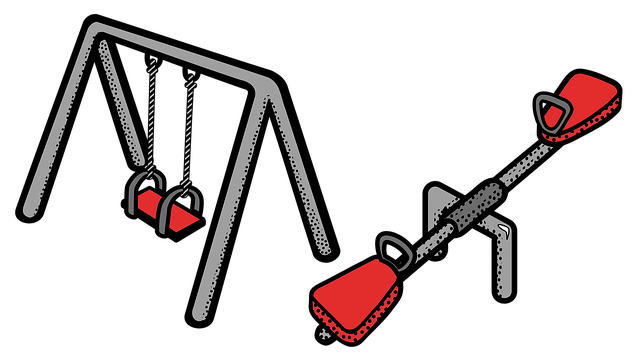Essex County's sober living homes offer structured, supportive environments for individuals transitioning from addiction treatment to independent living. These homes emphasize personal development, recovery skills, and peer mentorship, with activities and programs designed to address the root causes of addiction. They provide a drug-free space that encourages accountability through daily responsibilities and active participation in recovery programs. Residents are expected to adhere to strict house rules, including no substance use, and undergo regular testing. The homes also integrate with local communities for additional support, offering educational opportunities and wellness events, which not only aids those in recovery but also promotes a culture of empathy and understanding about addiction across the county. This comprehensive approach aims to equip residents with the tools and community needed for long-term sobriety.
discovers the transformative power of Essex County Sober Living Homes in fostering recovery and sustainable sobriety. This article delves into the multifaceted support systems within these communities, highlighting the structured environment, accountability measures, and access to local resources that contribute to personal growth and peer support. We explore the criteria for residency, the role of aftercare programs, and the financial considerations for those embarking on this journey. Through real-life success stories and an examination of the challenges faced in Essex County, readers will gain insights into choosing the most suitable sober living home for themselves or a loved one. Join us as we navigate the pathways to health, wellness, and long-term recovery in Essex County through the lens of transitional housing solutions.
- Understanding Essex County Sober Living Homes
- The Benefits of Transitional Housing for Recovery
- Criteria for Residency in Sober Living Environments
- Support Systems and Community Involvement
Understanding Essex County Sober Living Homes

Essex County’s sober living homes serve as a cornerstone in the recovery journey for individuals who have completed treatment programs and are transitioning from intensive care to independent living. These residences provide a structured environment that promotes sobriety, personal growth, and community integration. They are designed to offer support through peer mentorship, shared experiences, and mutual encouragement. Residents in these homes engage with recovery-focused activities and participate in the management of their living space, fostering a sense of responsibility and accountability. The programs often include life skills training, substance abuse education, and therapeutic resources to address underlying issues that may contribute to addiction.
The sober living homes in Essex County are tailored to meet the diverse needs of recovering individuals, with varying levels of structure and support depending on the stage of recovery each person is in. These homes are not medical facilities but offer a safe and supportive community where individuals can practice the skills learned in treatment and develop healthy, drug-free lifestyles. The success of these homes hinges on their ability to provide a harmonious balance between independence and oversight, allowing residents to rebuild their lives with confidence while maintaining their commitment to sobriety.
The Benefits of Transitional Housing for Recovery

Essex County’s sober living homes offer a structured environment that serves as a pivotal step for individuals transitioning from intensive treatment programs to fully integrated, substance-free lives. These residences provide a framework of accountability and support that aligns with the recovery goals of their inhabitants. The benefits of transitional housing in recovery are manifold: it offers a safe space free from the triggers and temptations of previous environments; fosters a community of peers who share similar experiences and challenges; and encourages the development of healthy routines and life skills necessary for sustained sobriety.
Moreover, sober living homes often come with structured rules and community engagement that help residents adapt to daily responsibilities without the influence of drugs or alcohol. Residents are typically required to participate in regular chores, attend therapy sessions, and maintain gainful employment or education, which reinforces their commitment to recovery and promotes a sense of purpose. This combination of peer support, structured routine, and responsibility contributes significantly to the healing process, bridging the gap between rehabilitation and independent living, and ultimately, enhancing the prospects for long-term sobriety.
Criteria for Residency in Sober Living Environments

Essex County sober living homes offer structured environments for individuals seeking to maintain sobriety after completing treatment programs. These residences provide a supportive community where recovery is the priority. To ensure a successful and safe transition for residents, these homes typically have established criteria for admission. Prospective residents must often demonstrate a commitment to their sobriety by providing evidence of recent substance abuse treatment or detoxification. Additionally, they are expected to undergo a thorough assessment to evaluate their readiness to live in a sober environment and to identify any potential risks that may require additional support. Residents must agree to adhere to house rules, which include abstaining from alcohol and drug use, actively participating in ongoing recovery programs, and contributing to the household through chores or other responsibilities. Regular drug and alcohol testing is also a standard requirement to maintain accountability within the community. The goal of these criteria is to foster an environment conducive to sustained recovery while providing residents with the necessary tools and support networks to succeed in their sobriety journey.
Support Systems and Community Involvement

Essex County’s sober living homes offer a structured environment that provides individuals in recovery with the support systems necessary to maintain their sobriety. These residences are designed to facilitate a smooth transition from treatment centers to independent living by offering a community of peers who share similar experiences and goals. The support networks within these homes are not limited to the residents; they extend to the surrounding community through partnerships with local organizations, recovery groups, and volunteer initiatives. This community involvement is crucial for creating a supportive atmosphere where residents can engage in meaningful activities, receive ongoing education about addiction and recovery, and participate in events that promote wellness and healthy living. The involvement of local communities not only enhances the lives of those in recovery but also helps to destigmatize addiction and promotes a culture of understanding and support throughout Essex County. This collaborative approach ensures that individuals in recovery have access to a comprehensive network of resources and a strong sense of belonging, which is essential for long-term success in maintaining sobriety.
Residential recovery programs, including those in Essex County, offer structured environments that play a pivotal role in supporting individuals on their journey of sobriety. The benefits of transitional housing within sober living homes extend beyond the initial phase of recovery, fostering sustainable long-term recovery through established criteria for residency and robust support systems. These communities not only provide a safe space but also encourage active participation in local activities, ensuring a harmonious transition back into society. As the article makes clear, the role of these sober living homes is indispensable, offering a framework for individuals to rebuild their lives with renewed purpose and well-being.

